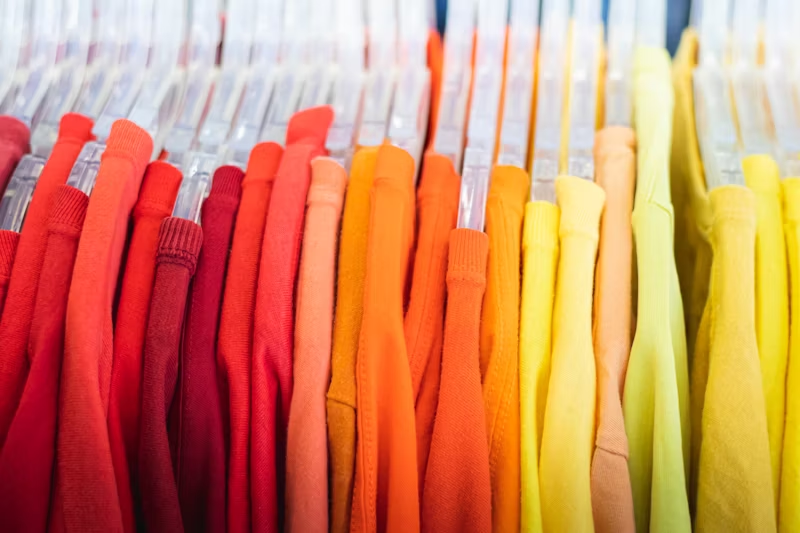Organizing a deep drawer can be a daunting task, especially if it’s filled with a jumble of items. However, with the right strategies and tools, it can be a breeze. Whether it’s a kitchen drawer filled with cooking utensils or a bedroom drawer overflowing with clothing, there are several ways to maximize space and keep everything in order.
One of the first steps to organizing a deep drawer is to declutter. Take everything out of the drawer and sort through the items, getting rid of anything that is no longer needed or used. This will not only free up space but also make it easier to see what’s left and decide how to organize it. Once the drawer is decluttered, it’s time to start organizing. There are several ways to do this, including using dividers, trays, and containers.
Dividers are a great option for separating items into different sections, making it easier to find what you need. They come in a variety of materials, including plastic, bamboo, and metal, and can be adjusted to fit the size of the drawer. Trays and containers are also helpful for keeping items organized. They can be used to group similar items together, such as socks or utensils, and can be stacked to maximize space. By using a combination of these tools, anyone can organize a deep drawer and keep it that way.
Assessing Your Deep Drawer Space
When it comes to organizing a deep drawer, the first step is to assess the available space. Understanding the dimensions of your drawer will help you determine what can fit inside and how to maximize space.
Understanding Drawer Dimensions
Deep drawers can vary in size, so it’s important to measure the width, depth, and height of your drawer. This will help you determine what organizers will fit inside and how much space you have to work with.
It is also important to consider any obstructions such as plumbing or electrical fixtures that may limit the usable space. Taking these measurements will help you make the most of your drawer space and avoid purchasing organizers that won’t fit.
Sorting Drawer Contents
Before you start organizing your deep drawer, it’s essential to sort through its contents. This will help you determine what items you need to keep and what can be discarded or donated.
To sort through your drawer contents, start by taking everything out and placing it on a flat surface. Then, group similar items together, such as utensils, baking supplies, or linens. This will help you see what you have and what type of organizers you might need.
Once you have sorted through the contents of your drawer, you can start organizing it in a way that maximizes space and makes it easy to find what you need. Keep in mind that different types of items may require different types of organizers. For example, utensils may require a different type of organizer than linens or baking supplies.
By understanding the dimensions of your deep drawer and sorting through its contents, you can create an organized and functional space that maximizes storage and makes it easy to find what you need.
Decluttering and Cleaning
Decluttering and cleaning are essential steps towards organizing a deep drawer. By removing unnecessary items, you can create more space and make it easier to find what you need. Cleaning the drawer ensures that it is hygienic and free from dust and debris.
Removing Unnecessary Items
The first step in decluttering a deep drawer is to remove all the items. It is important to take everything out of the drawer and assess each item individually. This way, you can determine which items you need to keep and which ones you can discard.
One effective way to declutter is to sort items into three categories: keep, donate, and discard. Keep only the items that are necessary and that you use regularly. Donate items that are in good condition but that you no longer need. Discard items that are broken, expired, or that you haven’t used in a long time.
Cleaning Techniques
Once the drawer is empty, it is time to clean it thoroughly. Start by vacuuming the drawer to remove any loose debris. Next, wipe the base and sides of the drawer with a damp cloth or sponge. Use a mild detergent or cleaning spray to remove any stains or grime.
After cleaning, let the drawer dry completely before putting the items back in. It is also a good idea to line the drawer with a non-slip liner or paper to prevent items from sliding around.
Regular cleaning and decluttering are important to maintain an organized deep drawer. By following these simple steps, you can create a clutter-free and hygienic space that is easy to use.
Organizing Strategies
When it comes to organizing a deep drawer, there are a few key strategies that can help maximize space and make it easier to find what you need. By grouping similar items and utilizing vertical space, you can make the most of your drawer space and keep everything neat and tidy.
Grouping Similar Items
One of the most effective ways to organize a deep drawer is to group similar items together. For example, in a kitchen drawer, you might group all of your cooking utensils together, or all of your baking supplies. This not only makes it easier to find what you need, but it can also help prevent items from getting lost or buried at the bottom of the drawer.
To group similar items in a deep drawer, consider using drawer organizers. These can be found in a variety of sizes and shapes, and can help keep everything in its place. For example, you might use a utensil tray to keep all of your cooking utensils together, or a small bin to corral all of your baking supplies.
Utilizing Vertical Space
Another key strategy for organizing a deep drawer is to utilize vertical space. This means using the height of the drawer to your advantage, rather than just relying on the width and depth.
To utilize vertical space in a deep drawer, consider using drawer dividers. These can help create smaller sections within the drawer, which can be used to store items vertically. For example, you might use a divider to create a section for spices, with each spice stored in a small jar or container.
Another option is to use hanging organizers, which can be attached to the sides of the drawer to create additional storage space. These can be used to store items like measuring spoons and cups, or even small pots and pans.
Overall, organizing a deep drawer requires some planning and strategy, but with the right tools and techniques, it can be a breeze. By grouping similar items and utilizing vertical space, you can make the most of your drawer space and keep everything in its place.
Choosing Organizers and Dividers
When it comes to organizing a deep drawer, choosing the right organizers and dividers is crucial. Not only do they help maximize the available space, but they also help keep items easily accessible. Here are some tips to help you choose the right organizers and dividers for your deep drawer.
Types of Drawer Dividers
There are several types of drawer dividers available, including:
- Vertical Dividers: These dividers are great for storing items like baking sheets, cutting boards, and muffin tins. They can also be used to separate different types of cookware.
- Peg Systems: Peg systems are ideal for organizing pots, pans, and other cookware. They allow you to customize the drawer to fit your specific needs.
- Plastic Dividers: These dividers are affordable and easy to find. They come in a variety of sizes and can be used to separate items like utensils, measuring cups, and spices.
- Clear Containers: Clear containers are great for storing items like snacks, tea bags, and packets of sauce mixes. They allow you to easily see what’s inside the container without having to open it.
- In-Drawer Knife Block: If you have a lot of knives, an in-drawer knife block is a great way to keep them organized and easily accessible.
- Stackable Drawer Organizer: A stackable drawer organizer is a great way to maximize the space in your drawer. They come in a variety of sizes and can be stacked on top of each other to create more space.
Selecting the Right Organizers
When selecting organizers for your deep drawer, consider the following:
- Tall Containers: Tall containers are great for storing items like cereal boxes, pasta boxes, and canned goods. They help maximize the space in your drawer and keep items easily accessible.
- Bamboo Dividers: Bamboo dividers are a great choice if you want a more eco-friendly option. They are also sturdy and aesthetically pleasing.
- Adjustable Dividers: Adjustable dividers are great if you want to customize your drawer to fit your specific needs. They can be moved around to create different sized compartments.
Overall, the key to organizing a deep drawer is to choose the right organizers and dividers that fit your specific needs. By doing so, you can maximize the available space and keep items easily accessible.
Implementing Storage Solutions
When it comes to organizing a deep drawer, storage solutions are key. Here are some practical tips for implementing storage solutions that will help keep your drawer organized and functional.
Storing Pots, Pans, and Plates
One of the biggest challenges with deep drawers is figuring out how to store larger items like pots, pans, and plates. One solution is to use tall bins or dividers to create compartments within the drawer. This allows you to stack items vertically, which maximizes the use of space and makes it easier to access items when you need them.
Another option is to use a combination of vertical and horizontal storage. For example, you can stack plates vertically on one side of the drawer and store pots and pans horizontally on the other side. This approach allows you to make the most of the available space while keeping items organized and easily accessible.
Organizing Utensils and Gadgets
Utensils and gadgets can also be challenging to store in a deep drawer, but there are several solutions that can help. One option is to use a utensil organizer that has compartments for different types of utensils, such as cooking spoons, spatulas, and tongs. These organizers can help keep utensils separated and easy to find.
Another solution is to use a combination of organizers and dividers to create compartments within the drawer. For example, you can use a divider to create a section for measuring spoons and another section for cooking utensils. This approach allows you to keep items organized and makes it easier to find what you need when you need it.
When it comes to gadgets, it’s important to consider how often you use each item. If you have gadgets that you use frequently, such as a can opener or vegetable peeler, it’s a good idea to keep them in a separate compartment or organizer that is easily accessible. For gadgets that you use less frequently, such as a garlic press or avocado slicer, you can store them in a less accessible area of the drawer to free up space for more frequently used items.
By implementing these storage solutions, you can make the most of your deep drawer and keep all of your kitchen essentials organized and easily accessible.
Labeling and Maintenance
Organizing a deep drawer is only half the battle. To ensure that it stays organized, labeling and maintenance are key. In this section, we’ll discuss how to create effective labels and routine organization checks.
Creating Effective Labels
Labels are essential for keeping track of items in a deep drawer. They make it easy to find what you’re looking for and keep everything in its place. When labeling items, it’s important to be clear and concise. Use a label maker or write labels by hand using a permanent marker. Be sure to include the name of the item and, if applicable, the expiration date.
For example, in a spice drawer, label each container with the name of the spice and the date it was purchased. This will help you keep track of which spices are still fresh and which need to be replaced. In a junk drawer, use labels to separate items into categories such as “pens,” “batteries,” and “sticky notes.” This will make it easier to find what you need quickly.
Routine Organization Checks
Once a deep drawer has been organized and labeled, it’s important to perform routine organization checks. This involves going through the drawer periodically to ensure that everything is still in its place and that nothing has been misplaced or lost.
During these checks, take the time to remove any items that don’t belong in the drawer. For example, if you find a pair of glasses in a kitchen towel drawer, remove them and put them in their proper place. These checks should be done on a regular basis, such as once a month or every few months, depending on how frequently the drawer is used.
By following these tips for labeling and maintenance, you can ensure that your deep drawer stays organized and clutter-free. With a little effort and routine checks, you can maintain an organized and functional space for all your storage needs.



